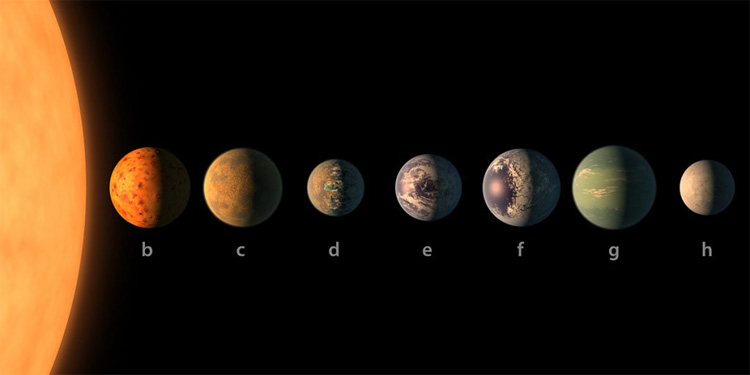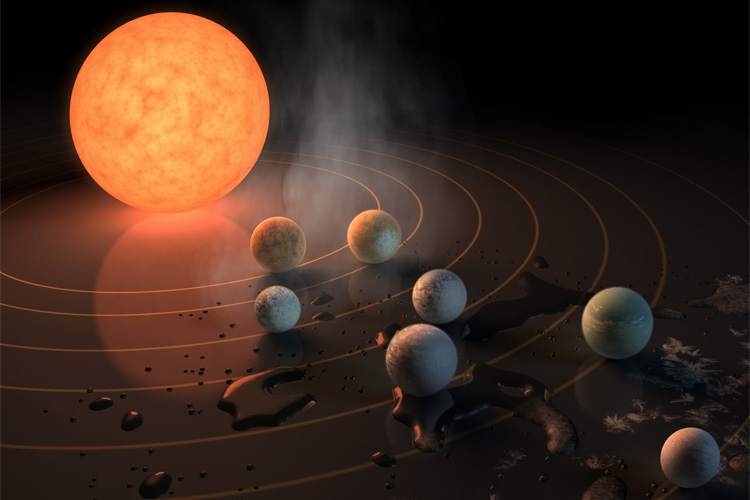NASA announced the discovery of the first known system of seven Earth-size planets around a single star, called TRAPPIST-1.
The rocky planets are most likely to have liquid water and, as a result, the chances of finding life increase dramatically. At least in three of them, where atmospheric conditions are extremely favorable.
The newly-found exoplanet system was named Transiting Planets and Planetesimals Small Telescope (TRAPPIST) and is about 40 light-years (235 trillion miles) from Earth.
"Answering the question 'are we alone?+ is a top science priority, and finding so many planets like these for the first time in the habitable zone is a remarkable step forward toward that goal," notes Thomas Zurbuchen, associate administrator for NASA's Science Mission Directorate.
Unlike our sun, the TRAPPIST-1 star is a very cool swarf, and the seven planets orbit close to it and close to each other.

Tidally Locked
But the new exoplanet system has other unusual characteristics.
According to scientists, the planets may be tidally locked to their star, meaning that the same side of the planet is always facing the star, i.e., each side is either perpetual day or night.
Unlike the Earth, this could also result in strong winds blowing from day side to night side and abrupt temperature changes.
The discovery would not be possible without a powerful tool - the Spitzer Space Telescope (SST).
But the instrument launched in 2003 will have a new ally. The James Webb Space Telescope will detect chemical fingerprints of water, methane, oxygen, ozone, and other components of a planet's atmosphere by 2018.
